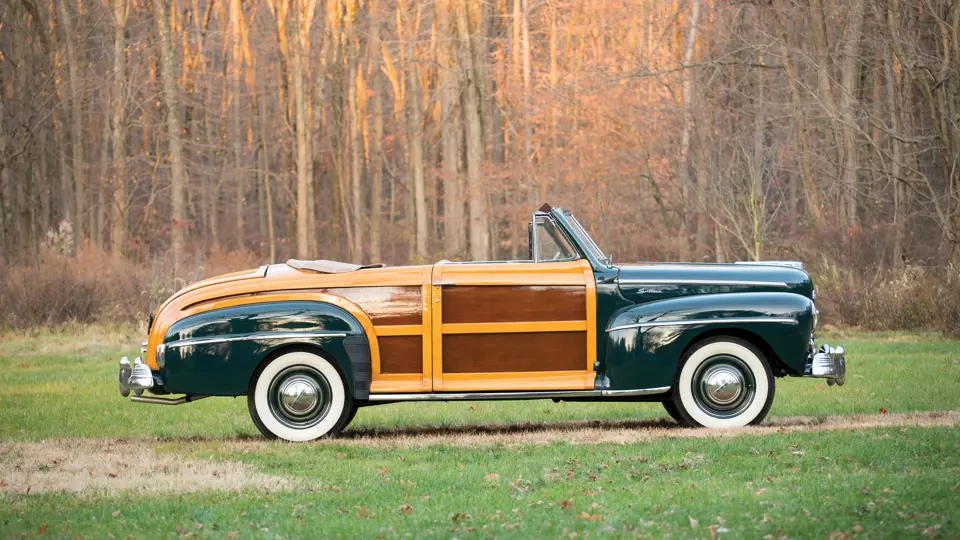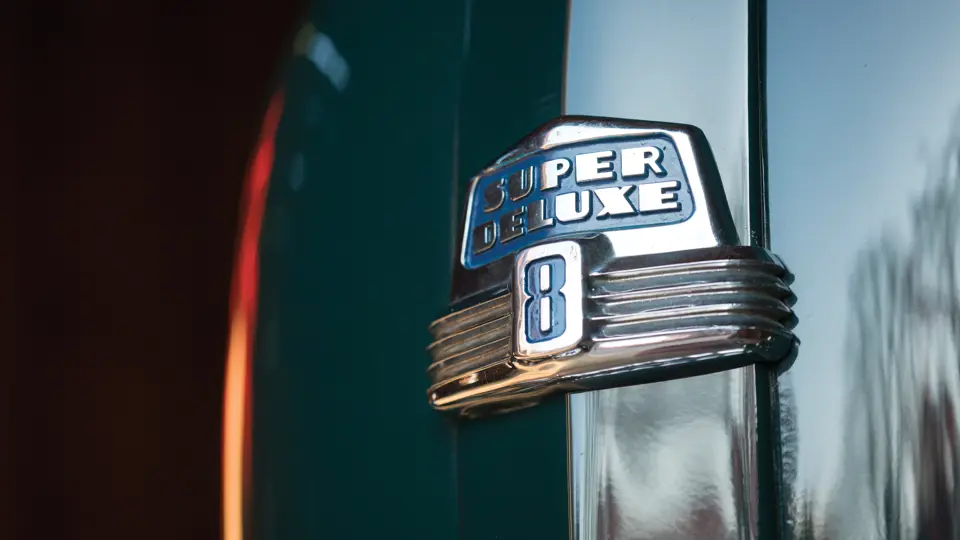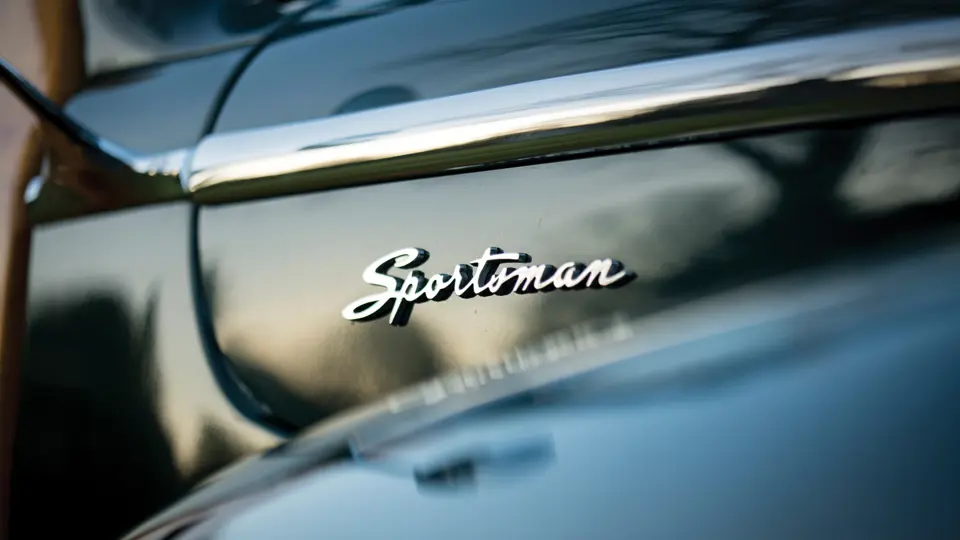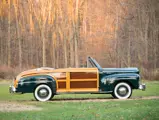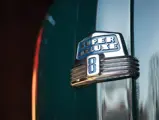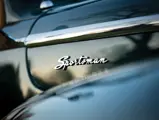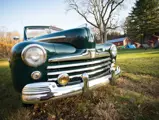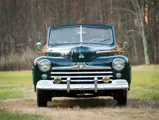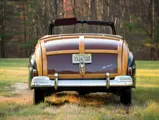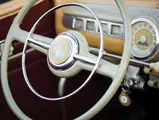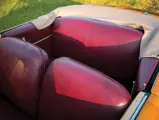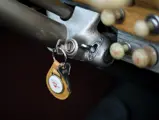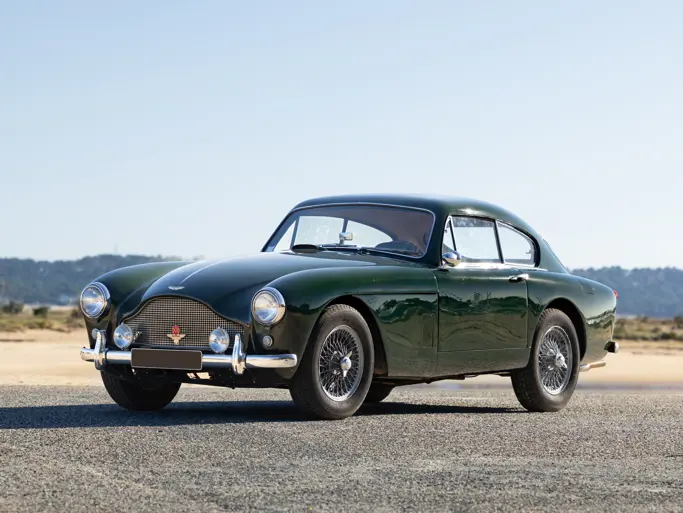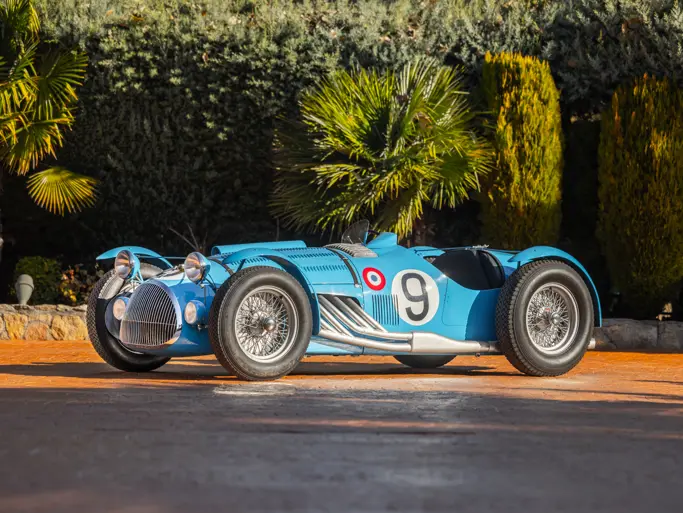100 bhp, 239 cu. in. V-8 engine, three-speed manual transmission, solid front and rear axles with transverse leaf springs, and four-wheel hydraulic drum brakes. Wheelbase: 114 in.
After the war, Ford was caught flat-footed when word came that Chrysler was planning a new line of wood-bodied cars based on its pre-war Town and Country. With no time to design a car from scratch, Henry Ford II asked Ford designer E.T. “Bob” Gregorie to engineer a wood-bodied car based on the existing Ford lineup to fit between its convertibles and woodie station wagons.
The Ford design and engineering teams met at the company’s Iron Mountain sawmill and body plant with some initial design drawings and a Ford Super DeLuxe convertible, and set about designing what would become the Sportsman “woodie” convertible. They adorned its sides with beautiful mahogany panels, framed and mortised with solid maple harvested from the Michigan forests surrounding the plant. Unlike the Town and Country, which used body panels that were structurally wood, the Sportsman is structurally steel, so the doors are less prone to sagging over time. Ford used the rear fenders from a 1941 sedan delivery model to allow easier fitment of the wood. The power hydraulic window system was taken from the Lincoln Continental, and the gas filler lid from the Ford station wagon.
Inside was an Art Deco-inspired dash in mahogany with handsome color-keyed trim. Considered a premium model, the Sportsman came with seats upholstered in genuine leather facings in tan or red and included French stitching. The Sportsman was intended as a halo car, helping to draw customers into showrooms and serving as an example of the best that the company could produce.
One of 2,274 Sportsmans built in the 1947 model year, the car offered here has been meticulously maintained. An older show-quality restoration with a bare-metal re-paint in correct Glade Green, it is complemented by a tan power-operated convertible top, excellent brightwork, and many desirable options and accessories. Among them are front and rear bumper guards, correct Ford fog lights, dual chrome-plated mirrors integrated into the bodyside chrome strips, and a set of wide whitewall tires, mounted on Glade Green steel wheels adorned with chrome-plated trim rings and hubcaps. The door locks are shielded with small chrome lids.
The immaculate interior was in 2015 fitted with correct red leather upholstery and is equipped with correct heater, electric clock, and Wonder Bar radio. The interior wood trim is original and remains in excellent condition throughout. The correct hydraulic window lifts, quite a luxury in 1947, are fitted. The engine bay is thoroughly detailed and features a correct Ford flathead V-8 engine; the engine is believed to be original, but a fire destroyed records from this period, so this cannot be confirmed. Underneath and throughout, this Sportsman is immaculate.
Among the most desirable of early post-war Fords, the Sportsman is a piece of Americana, a rolling symbol of post-war optimism. This is a fine example that has not been shown publicly for many years and not since its restoration was completed. It is ready to be driven in touring events or to be shown at AACA, Early Ford V-8 Club of America, and National Woodie Club meets.

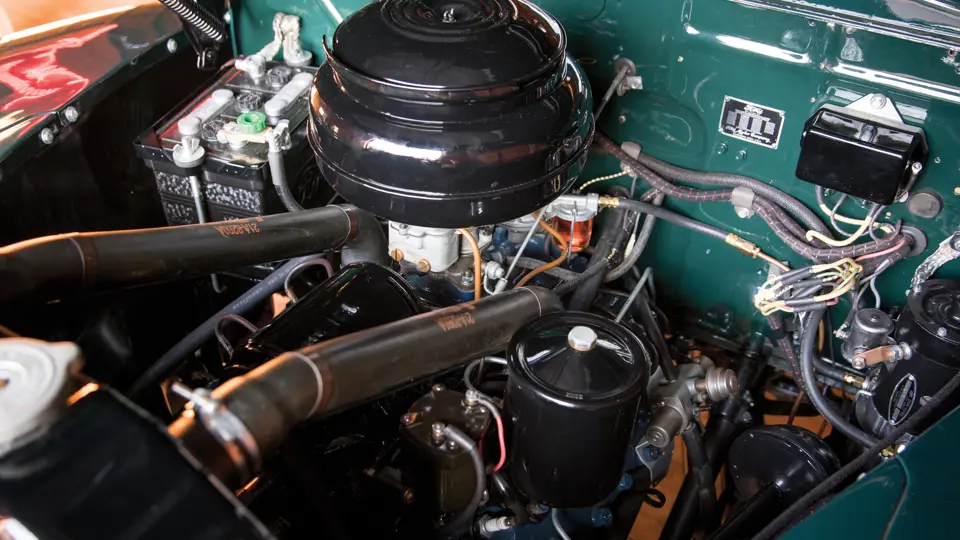



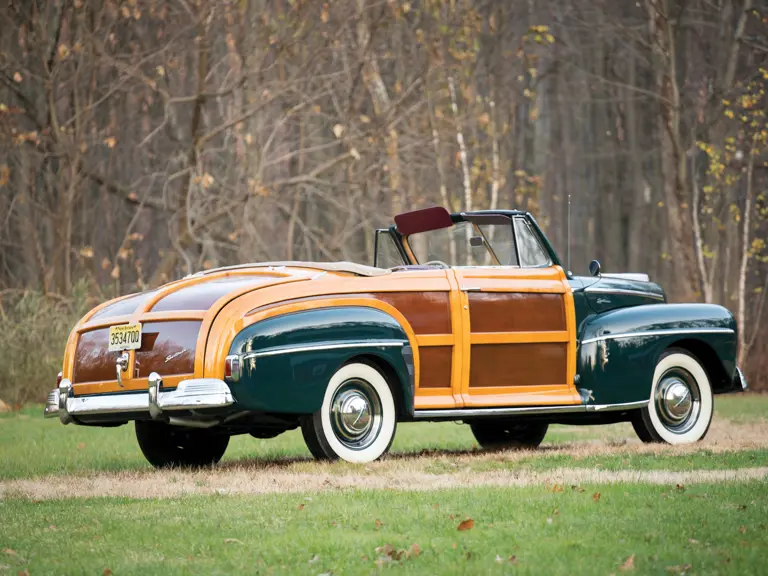
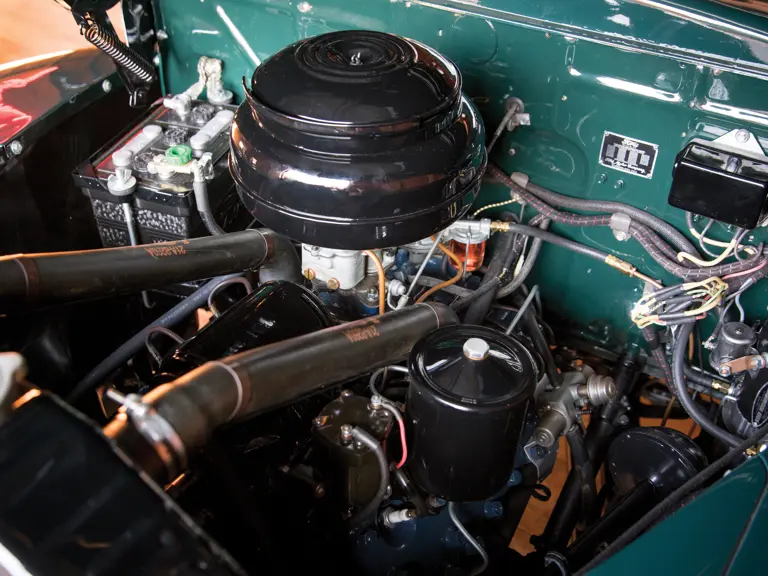
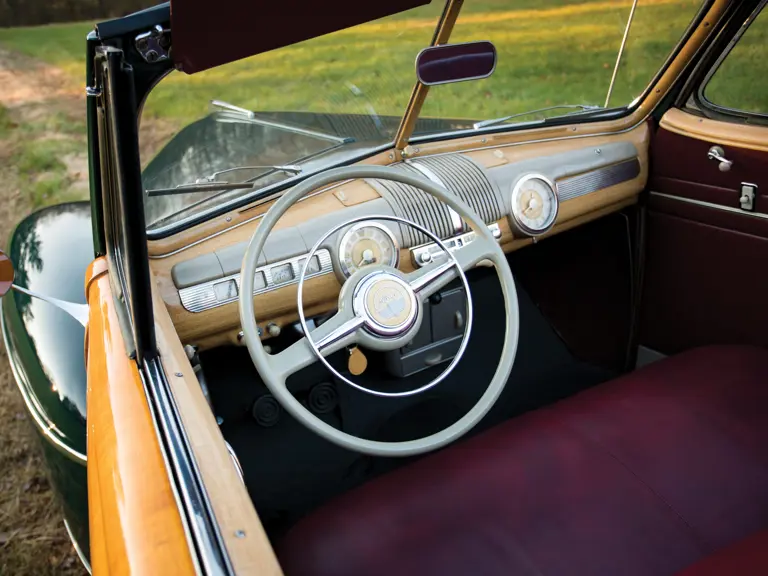
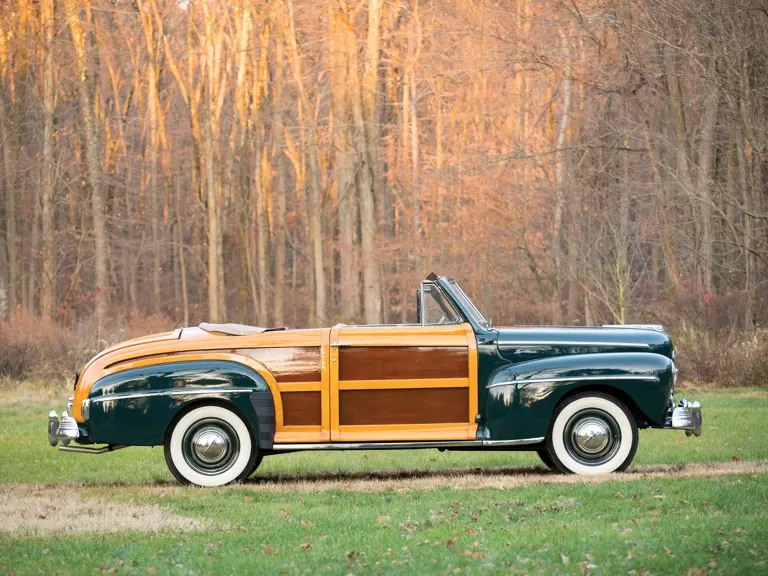
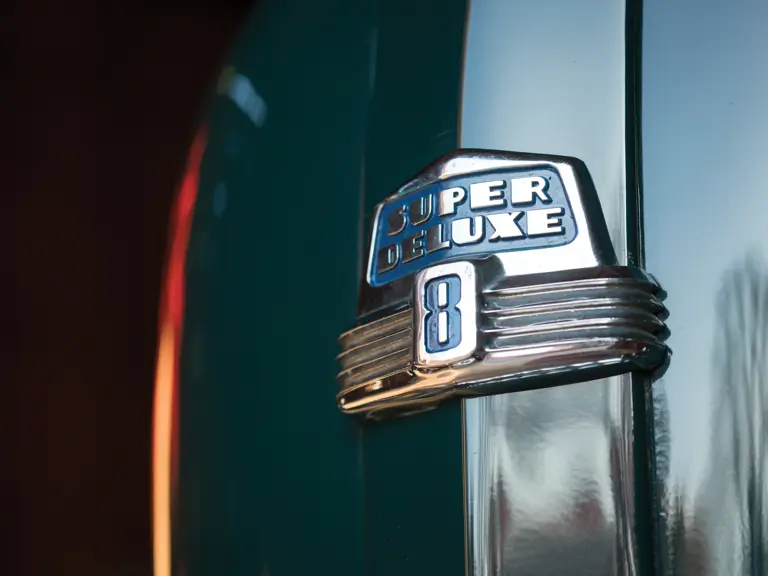
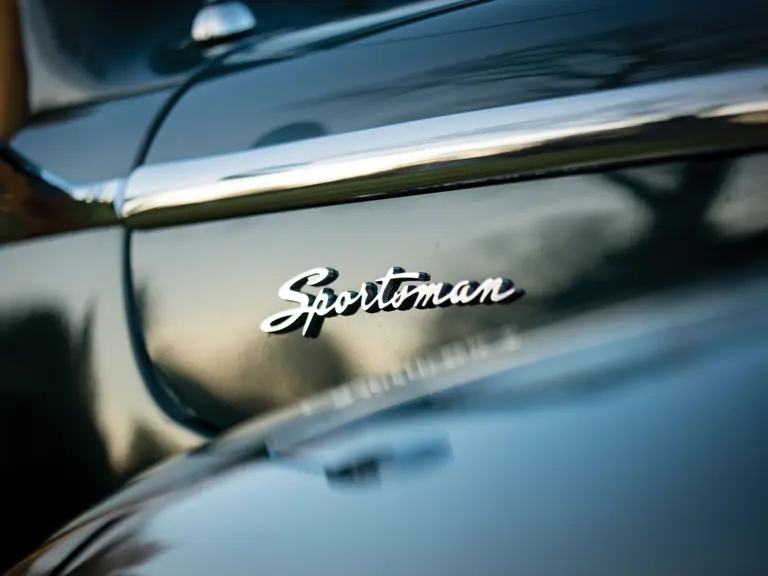

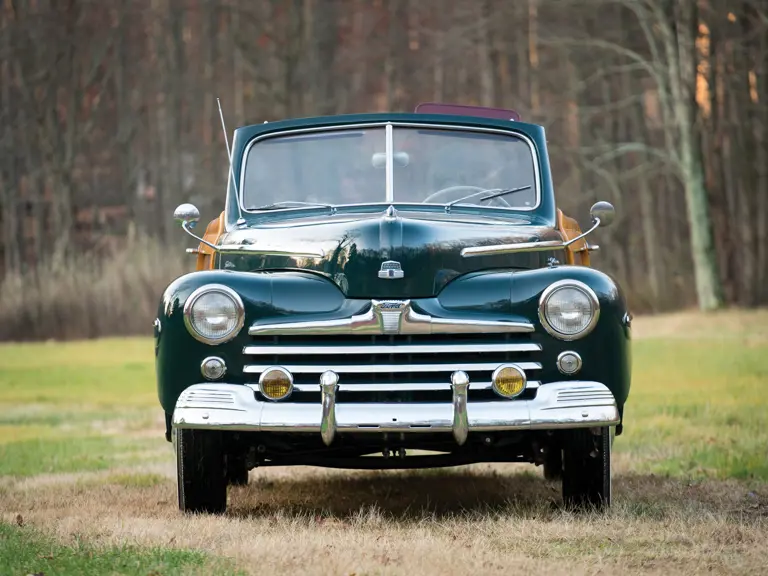
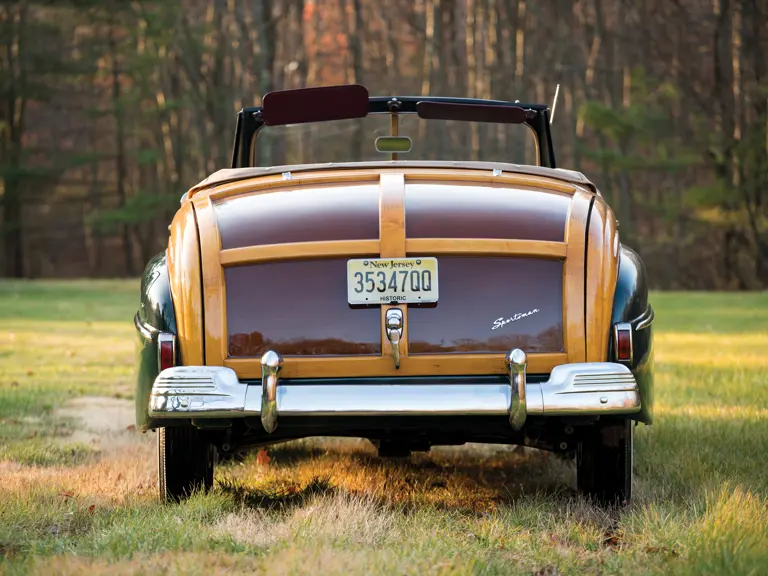




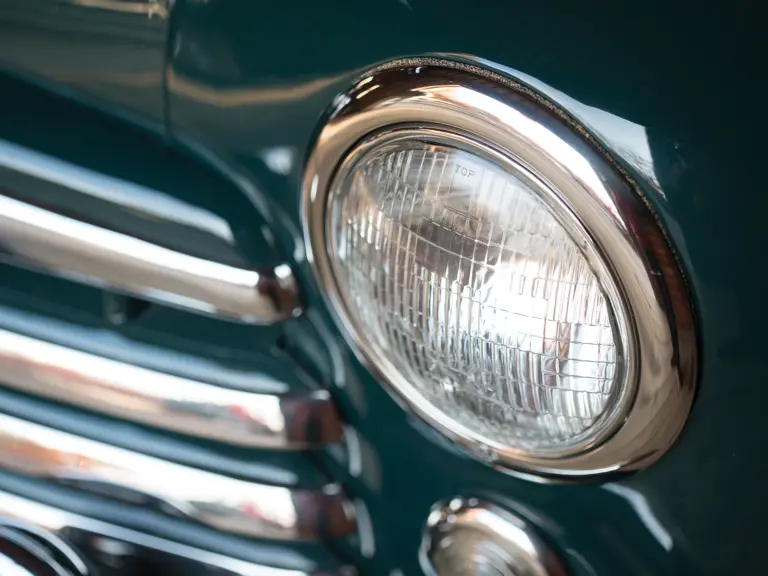
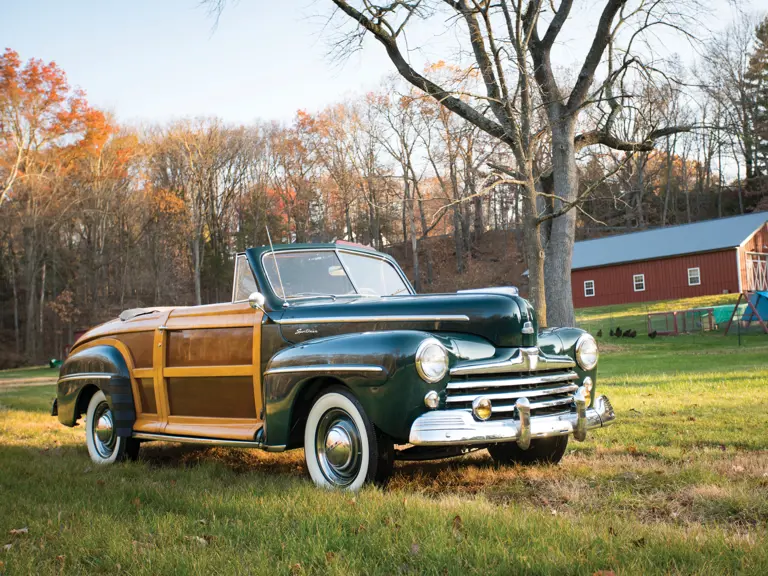

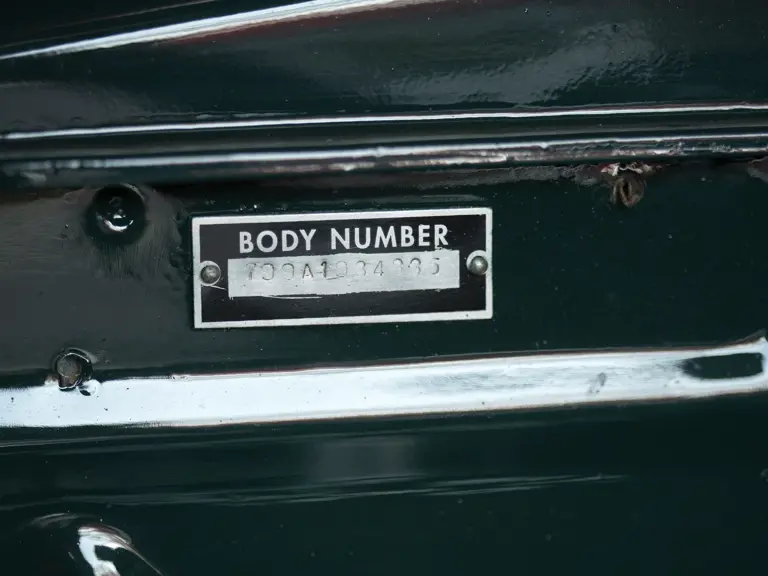

 | Phoenix, Arizona
| Phoenix, Arizona
